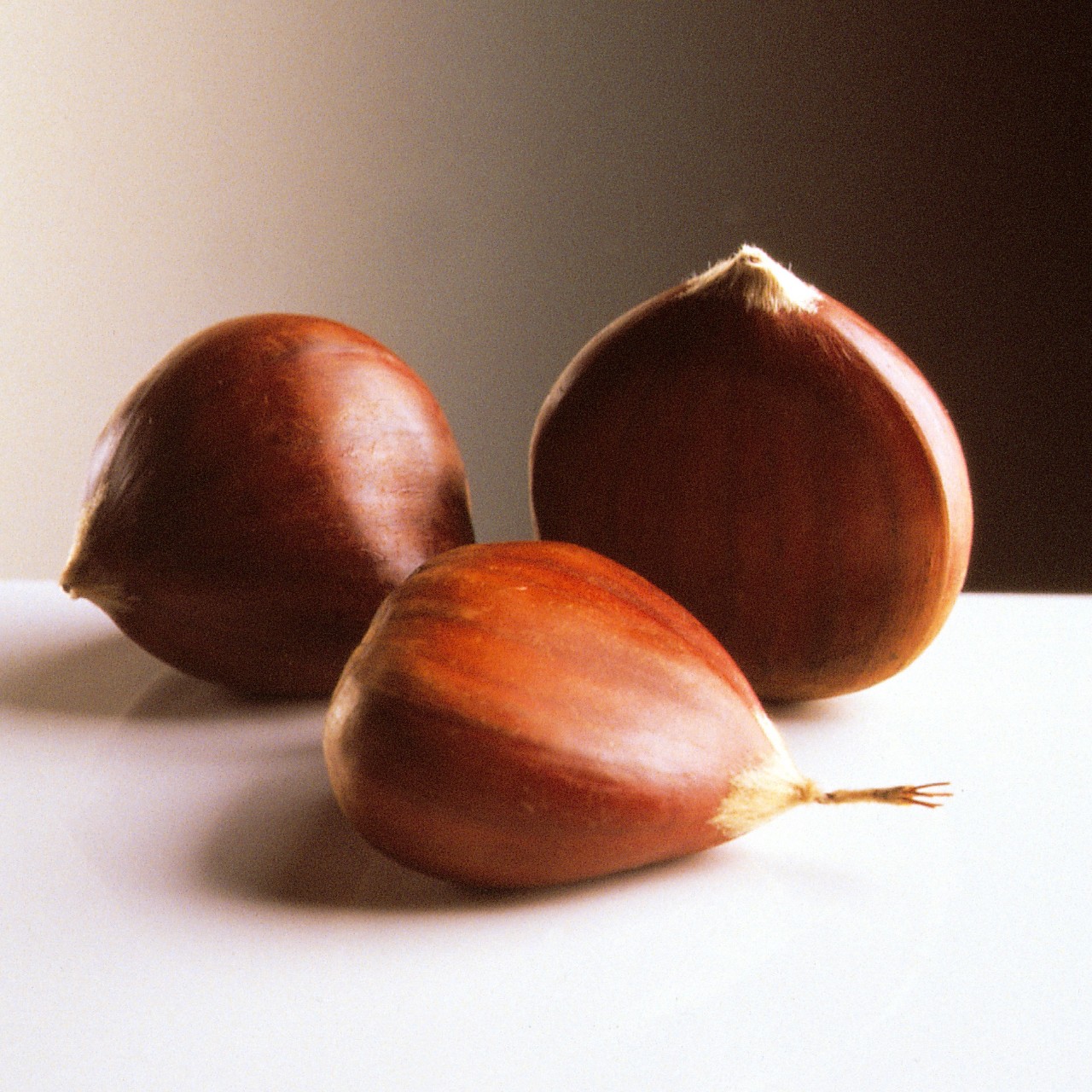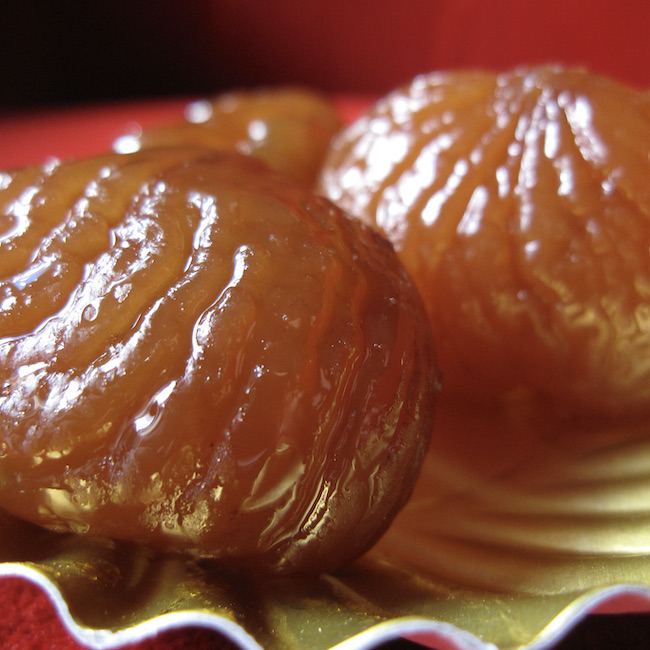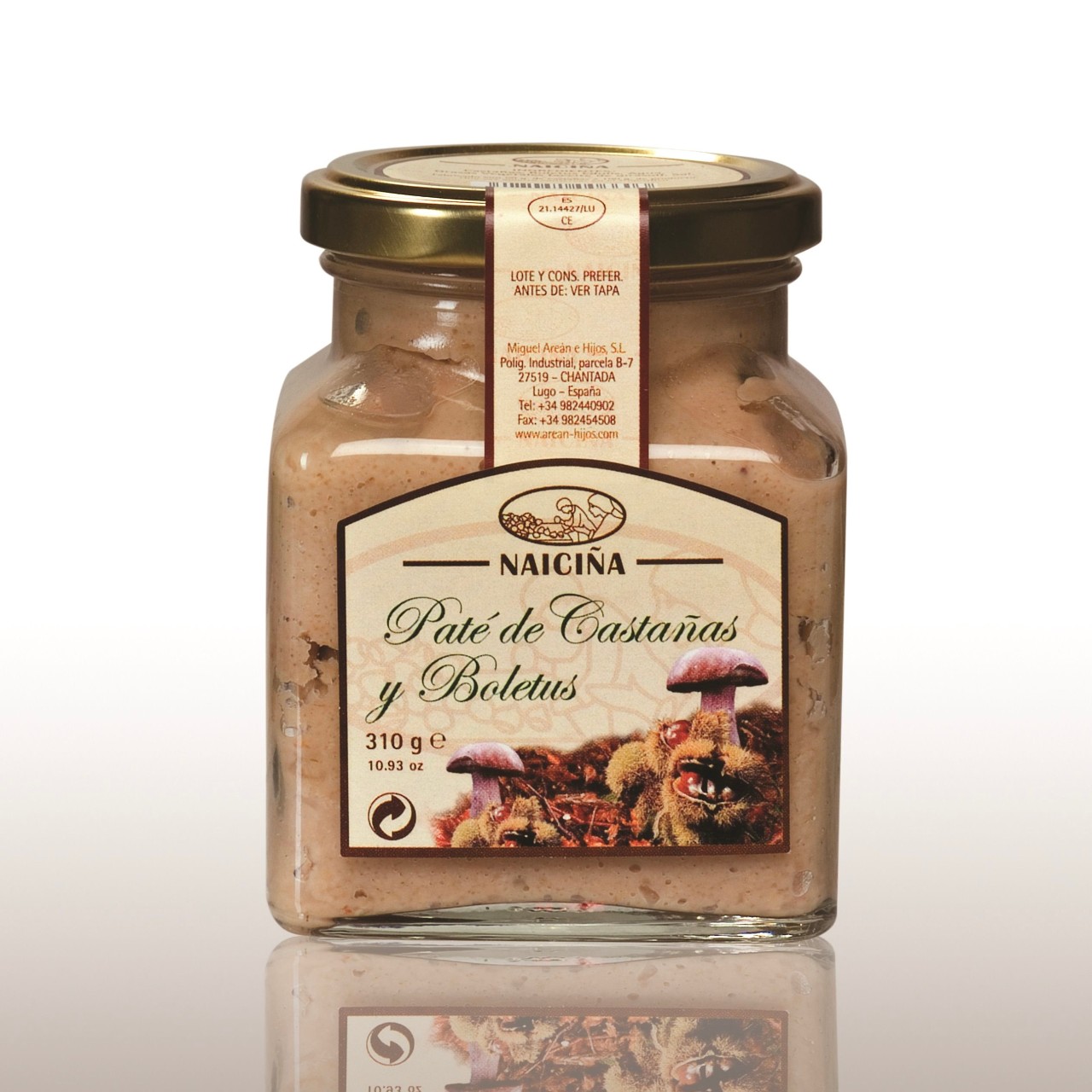- by John Barlow @John_Barlow_LS9
.png.transform/rendition-xs/image_image%20(1).png)
Spain is the second producer in the world of this fruit, that symbolizes Fall and can be enjoyed in multiple ways: dried, in creams or in sophisticated foodie gifts as Marrón Glacé.

- by John Barlow @John_Barlow_LS9
Whether served by a street vendor on a cold winter’s evening, or in the stuffing of your Christmas turkey, the sweet chestnut (Castanea sativa) has a particularly evocative place in our food culture. But it’s not just a yuletide favourite. In Spain, chestnuts have a long, noble history, and continue to be far more versatile than we often imagine.
Chestnuts and sweet acorns were a common source of nutrition across southern Europe in pre-agricultural times, and remained a staple source of carbs after cereals began to be cultivated. The Romans were great fans; their soldiers were given chestnut porridge before going into battle, and a version of that ancient recipe is still eaten in Corsica (called a polenta, but not the polenta we know).
The arrival of potatoes and corn from the Americans in the 16th century relegated the consumption of the humble chestnut to mountainous, rural communities. It would remain a somewhat marginal ‘peasant’ food in Spain and southern Europe for centuries, although paradoxically the sugared, preserved form (marrón glacé) became a favoured treat of the upper classes, especially in France.
The harvest and Magosto
Castanea sativa trees thrive in moist conditions, and can live for centuries. Many European countries maintain a chestnut tradition, and nowhere is it stronger than in the rainy mountains of Galicia, in the north-west of the Spanish Peninsula. Whereas China is the world’s leading producer of chestnuts, Spain is second, and well over half the country’s production is based in Galicia.

The chestnut harvest runs from late September to November. In Galicia, and further afield, this is known as the Magosto. By tradition, rural populations gather to celebrate the turn of the agricultural season and to collect chestnuts, often roasting some of them there and then as part of the festivities. In Galicia alone, there are over 60 registered chestnut festivals, all in the autumn, coinciding with the Magosto.
Such is the importance of the fruit here that Galicia’s sweet chestnuts enjoy the European Union’s coveted Protected Geographical Indication (PGI) status. The 81 varieties harvested in this part of Spain are notably sweet, with a fine membrane, a firm texture which is not floury. At almost 60% average carbohydrate, they have the highest percentage of carbs of any chestnuts in Spain. They are also by their very nature an ecological product and mainly collected by hand.
From Fresh to Flour
Sweet chestnuts are marketed in a variety of forms. First it fresh, de-husked but still in their skins, these are ideal for roasting or further processing. They can also be frozen: the fruits are peeled and frozen quicky (the ‘IQF method’), which avoids the development of micro-crystals within the flesh. Chestnuts can also be peeled and pre-cooked. Canned or in vacuum packs, these are perfect for tossing into a sauce, instantly taking your recipe to the next level. Another option is dried. These can be rehydrated overnight and simmered until soft, a useful addition to the gourmet larder. And in the form of flour: this is an interesting option for baking, and yields particularly sweet and nutty cakes and pastries.
Naiciña, an artisanal producer in Galicia, exports around 40% of its production to the UK, USA, Switzerland, Italy, Canada, the Middle East and South American countries. What is perhaps more surprising is that about four-fifths of its value-added products find their way abroad. As the company’s General Director, Miguel Ángel Areán, notes, their ‘best seller’ is vacuum-packed cooked chestnuts, followed by chestnut flour. Indeed, such products are assuming ever greater significance in Spain’s chestnut exports. And there are plenty to choose from…

‘Marrón glacé’, a sweet delight
Preserved in sugar, this is the classic option. Whether in jars or presentation boxes, marrón glacé is the perfect foodie gift, and still a huge favourite in France. The Galician company Cuevas, for example, is one of the leading producers of Spanish marrón glacé, and exports to over 30 countries worldwide. Marina Domínguez Valcárcel, the company’s Commercial Director, points to Japan as an especially important market, given the passion there for all European gourmet products, not least chestnuts. She also reports recent exponential growth in the export of chestnut purées, creams, and other value-added products.
The market is indeed expanding. Here are the most interesting innovations currently available. Marrón glacé preserved in vanilla-infused syrup. Try crumbling these over ice cream and dribbling a spoonful of the syrup on top. (Naiciña). Marrón glacé and brandy. Preserving in brandy adds a subtle punch, but it’s not overpowering, and gives a magical kick to the sweet notes of the fruit. (Posada). Marrón glacé and Poire Williams eau de vie. Chestnuts preserved using this strong fruit ‘fire water’ might seem like overkill, but it’s surprisingly subtle and delicate. (Cuevas)

Marmalades, creams and more
Chesnuts are also great for preparing creams and marmalades. Chestnut Cream is made with 50% chestnuts, and is sweet and nutty with a hint of vanilla. (Naiciña). Another preparation is Chestnut and apple confit is mild yet very distinctive. (Dosouto). It can be used for a chestnut and chocolate cream. If you like hazelnut and chocolate spreads, try this for an exquisite alternative. (DoSouto). Souto da Trabe company mixes them with fig and pumpkin marmalade. Chesnuts also work very well steeped in Pedro Ximénez, as made by Cuevas. This company also sells them steeped in ginger-infused nectar.
The chef’s larder
Finally, don’t forget that chestnuts are a great addition to your stock of chef’s tricks in the kitchen. They’re simple to cook with and add a note of complexity and elegance to a variety of dishes. An example is Chestnut and wild mushroom paté. Sounds crazy, but in fact it has well-balanced flavours and a depth of rustic notes. A spoonful of this in a simple pasta dish works wonders, and it’s also a convenient, fuss-free way to stuff meats, especially pork. (Naiciña). Another preparation by Naiciña is Chestnut puré that instantly thickens meat dishes, adding characteristic sweetness to any meat recipes, especially game and roast meats. Pure magic.